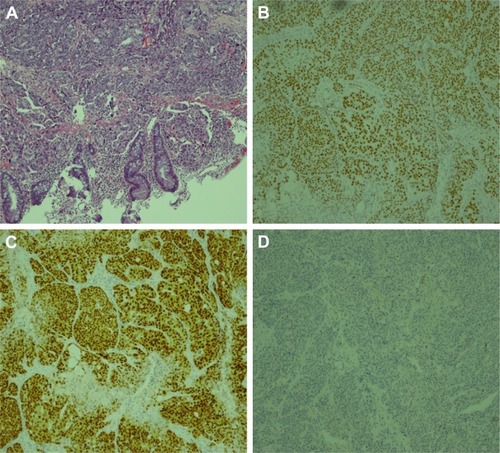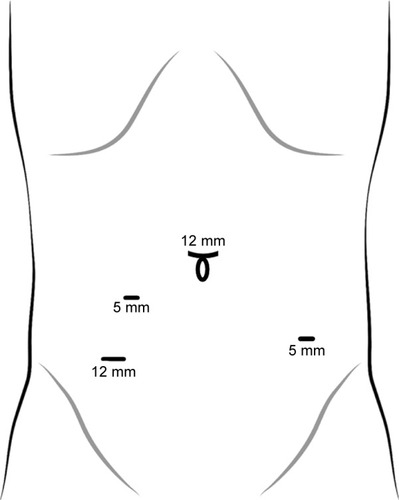Figures & data
Figure 1 Abdominal ultrasound showed a 2.9×2.6 cm2 hypoechoic solid tumor with abundant blood flow signal.
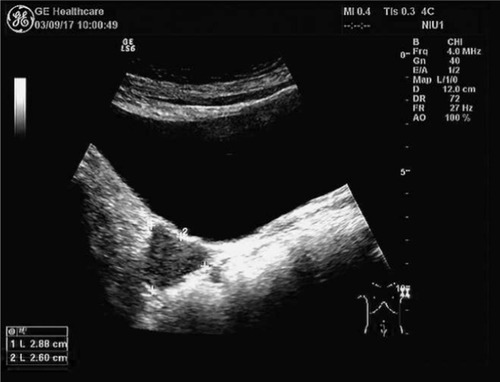
Figure 2 Pelvic magnetic resonance imaging showed that a 3.1×2.6 cm2 nodule (blue arrows) had invaded the rectum.
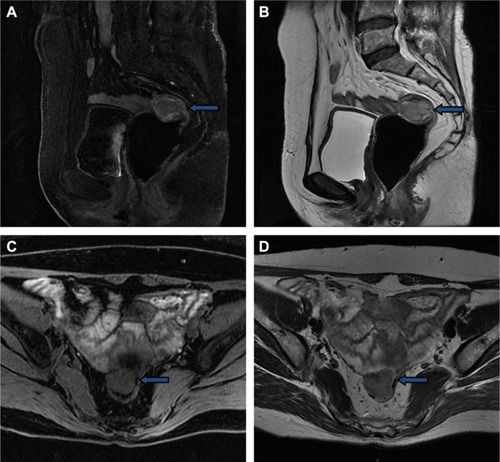
Figure 4 Transanal specimen extraction via laparoscopic rectectomy without an abdominal incision.
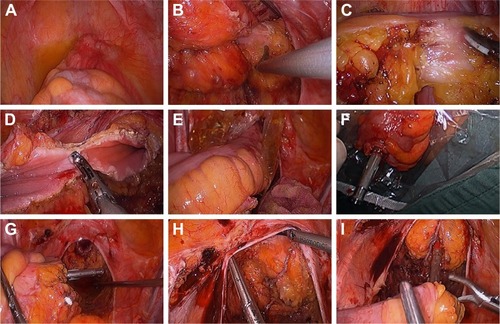
Figure 5 Macroscopic observation of rectal neoplasm.
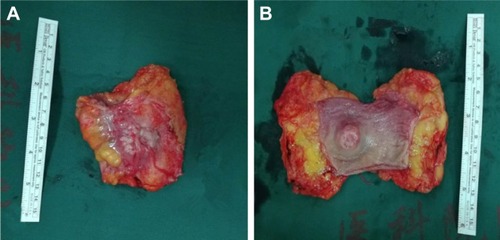
Figure 6 Microscopic observation and immunochemistry of rectal neoplasm.
